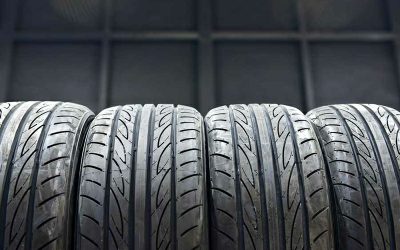The start of winter usually sparks the annual debate about whether to splurge on a set of specialty snow/winter tires. But, first of all, what are snow tires? What’s the difference between snow tires vs. all-season tires? Do snow tires improve your safety in unpredictable wintry conditions? Let’s find out!
What Are Snow Tires?
Snow tires, referred to as winter tires, are specially developed for running on snow and ice.
They have larger gaps between their treads than regular tires, helping improve traction in snowy conditions.
These tires have passed a certain traction performance test throughout the winter before reaching the users. Some of them contain metallic studs that emerge from the rubber to improve grip on tough snowy or icy surfaces.
However, studs abrade dry ground, resulting in dust and wear along the wheel path. Regulations requiring the use of snow tires or allowing the use of studs differ from nation to country. In North America, rules change by province or territory.
Snow Tires Vs. Regular Tires: Which Are Better?
The choice between winter or snow tires vs. all-season tires depends on your location and the driving conditions.
You should go for all-season tires if your area only gets a little light snow a year and snowy roads are not a common sight. However, if snow is a constant problem, mounting snow tires on your vehicle isn’t redundant but a necessary safety step that ensures your safety.
Here are some factors that distinguish snow tires and regular all-season tires.

Tread Rubber Compound
Manufacturers use a specific rubber to construct snow tires for superior performance in extreme cold.
When the temperature nosedives, the rubber will stay flexible and soft, allowing your tires to deliver enough grip and traction. In the cold, the rubber in ordinary tires (including all-season tires) stiffens, resulting in reduced traction.
Tread Patterns And Depth For Ice And Snow Grip
Snow tires have deeper tread depths than ordinary tires. This feature enhances traction and reduces snow accumulation in the tread.
Besides deep treads, winter tires contain distinct tread patterns, or fissures. By efficiently evacuating water through the tread, these unique grooves assist in reducing the risk of hydroplaning.
It forces moisture out of the tire and away from the ground, allowing your wheel to establish solid contact with the road.
Biting Edges
On loose terrain, circumferential grooves also offer lateral biting edges that improve cornering grip.
Tread blocks have tiny, slit-like grooves that allow them to move. By adding a second biting edge, this extra flexibility improves traction. Sipes are in handy for dealing with ice, light snow, and loose soil.
Lateral grooves increase the amount of biting edges in the tire, which improves accelerating and braking traction on loose ground. They also add to the rubber’s void ratio, which aids wet traction.
Markings
Markings on the tire show its intended purposes. A winter tire commonly has a three-peak mountain snowflake symbol, indicating that it meets the required minimum traction for extreme winter driving conditions.
You can never find this marking on all-season or normal tires.
Normal tires are more likely to bear the generic M+S designation. On ice, or heavily snow-covered roads, M+S tires may not perform well as you wish.
Why We Should Not Use Winter Tires In The Summer?
Here are two reasons to avoid using winter tires in the summer.
- Snow tires’ tread rubber is weaker than normal tires’ and wears out faster on hot pavement, meaning that you need more frequent replacement.
- On dry roads, softer rubber tires result in less accurate handling and responsiveness, lowering the performance of your car.
In other words, a lot can go wrong if you keep your snow tires on throughout the year. What gives winter tires an edge in harsh winter puts them at a disadvantage in other road conditions.
When the temperature warms up, the same deep treads, supple rubber, and studs that keep winter tires grippy in the winter can cause them to degrade faster.
Conclusion
We cannot deny the advantages of both winter and all-season tires. However, snow tires outweigh normal tires when performing in cold weather because of their specific features, such as bigger gaps between treads, pliable rubber and biting edges.








